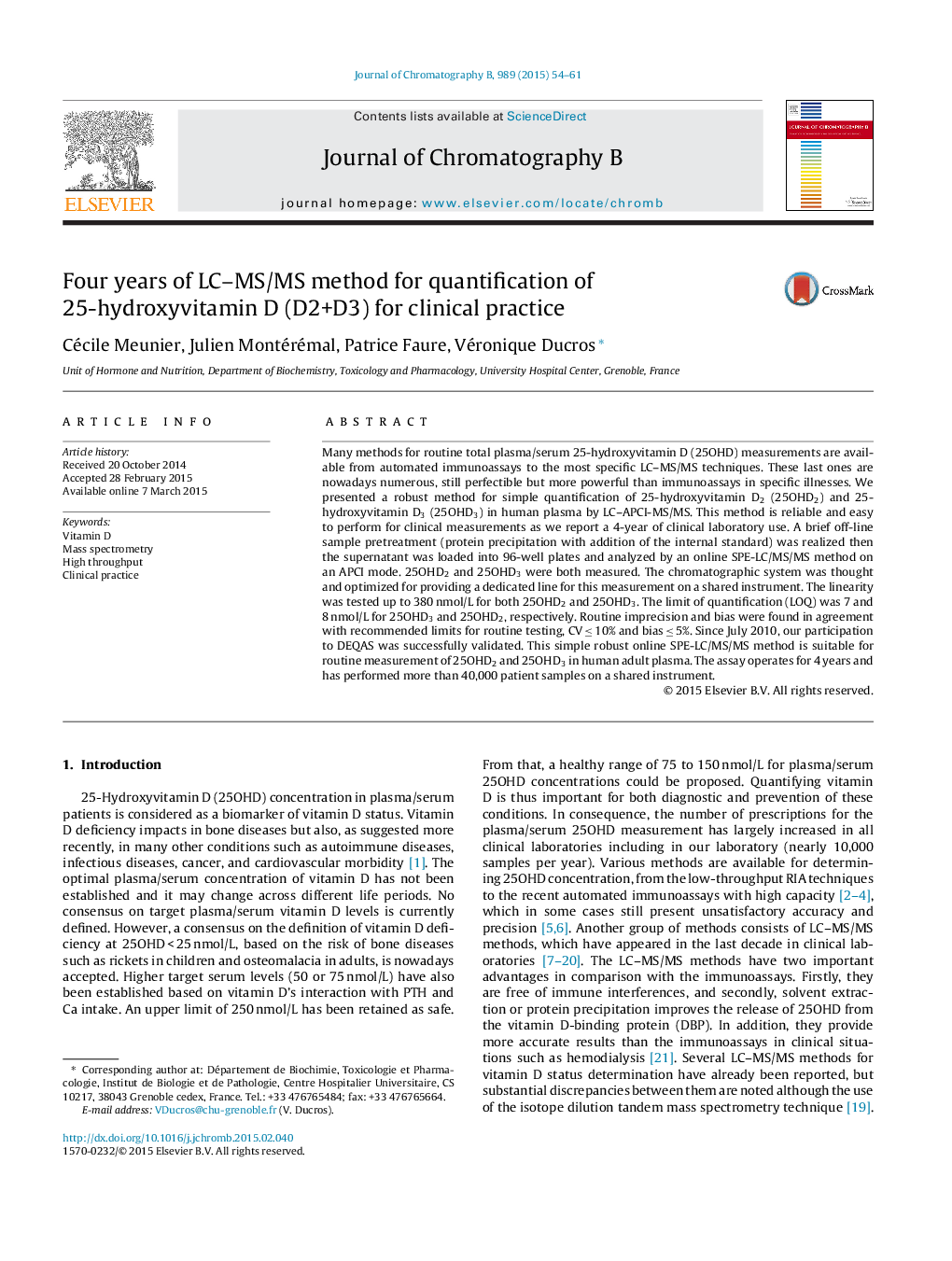| Article ID | Journal | Published Year | Pages | File Type |
|---|---|---|---|---|
| 1212248 | Journal of Chromatography B | 2015 | 8 Pages |
•A routine LC–MS/MS method for plasma 25 hydroxyvitamin D (D2 + D3) determination is proposed.•On a shared LC–MS/MS with a special design allowing dedicated lines for three groups of users.•Long-term use (4 years) with high throughput (at least 100 samples per set) two times per week.•Matrix effects and stability data on real samples were performed.•Low cost but high efficiency for clinical diagnosis have been particularly studied.
Many methods for routine total plasma/serum 25-hydroxyvitamin D (25OHD) measurements are available from automated immunoassays to the most specific LC–MS/MS techniques. These last ones are nowadays numerous, still perfectible but more powerful than immunoassays in specific illnesses. We presented a robust method for simple quantification of 25-hydroxyvitamin D2 (25OHD2) and 25-hydroxyvitamin D3 (25OHD3) in human plasma by LC–APCI-MS/MS. This method is reliable and easy to perform for clinical measurements as we report a 4-year of clinical laboratory use. A brief off-line sample pretreatment (protein precipitation with addition of the internal standard) was realized then the supernatant was loaded into 96-well plates and analyzed by an online SPE-LC/MS/MS method on an APCI mode. 25OHD2 and 25OHD3 were both measured. The chromatographic system was thought and optimized for providing a dedicated line for this measurement on a shared instrument. The linearity was tested up to 380 nmol/L for both 25OHD2 and 25OHD3. The limit of quantification (LOQ) was 7 and 8 nmol/L for 25OHD3 and 25OHD2, respectively. Routine imprecision and bias were found in agreement with recommended limits for routine testing, CV ≤ 10% and bias ≤ 5%. Since July 2010, our participation to DEQAS was successfully validated. This simple robust online SPE-LC/MS/MS method is suitable for routine measurement of 25OHD2 and 25OHD3 in human adult plasma. The assay operates for 4 years and has performed more than 40,000 patient samples on a shared instrument.
